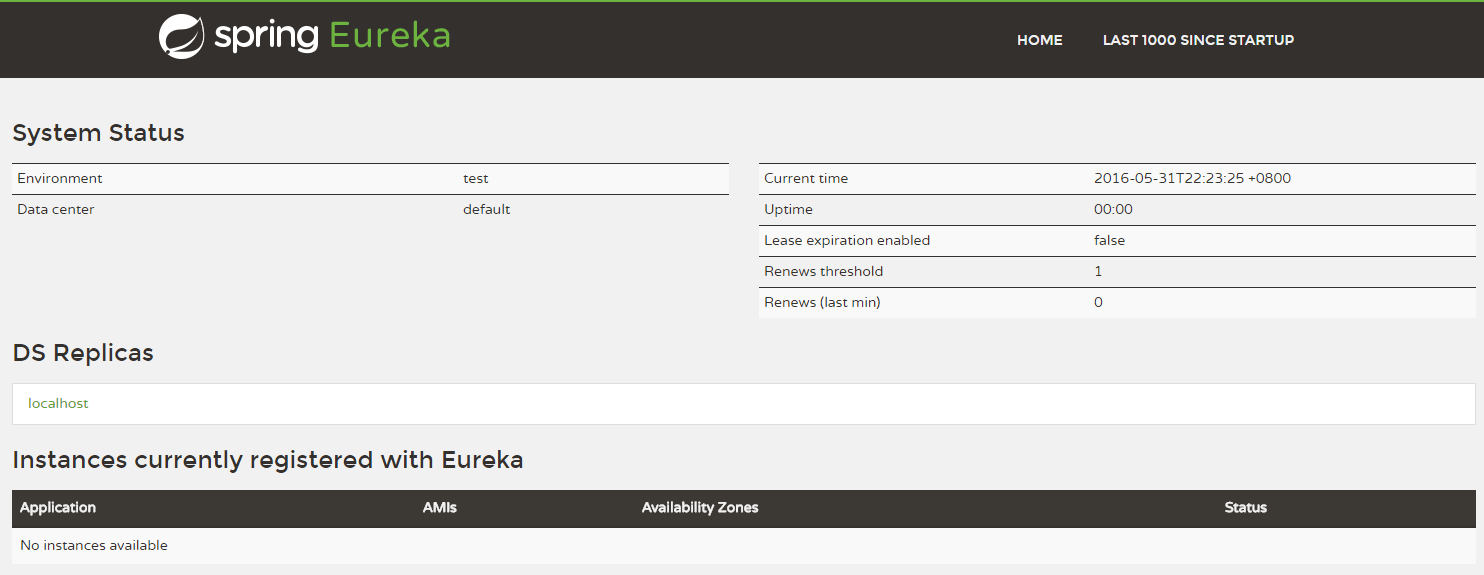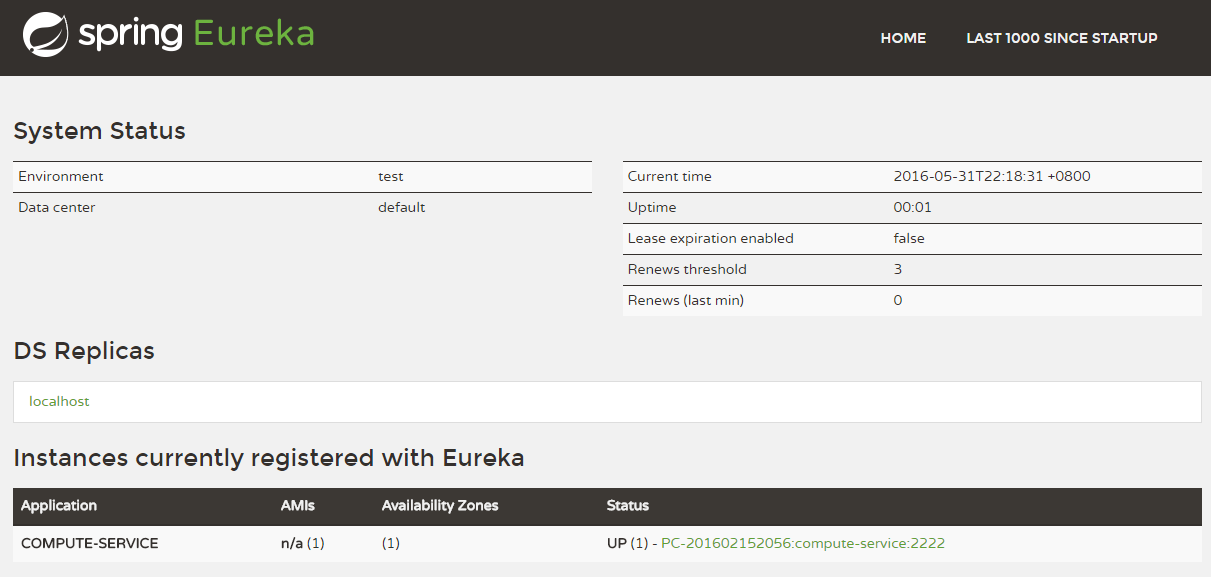springcloud (一) Eureka服務註冊與發現
http://blog.didispace.com/springcloud1/
Spring Cloud簡介
Spring Cloud是一個基於Spring Boot實現的雲應用開發工具,它為基於JVM的雲應用開發中的配置管理、服務發現、斷路器、智慧路由、微代理、控制匯流排、全域性鎖、決策競選、分散式會話和叢集狀態管理等操作提供了一種簡單的開發方式。
Spring Cloud包含了多個子專案(針對分散式系統中涉及的多個不同開源產品),比如:Spring Cloud Config、Spring Cloud Netflix、Spring Cloud CloudFoundry、Spring Cloud AWS、Spring Cloud Security、Spring Cloud Commons、Spring Cloud Zookeeper、Spring Cloud CLI等專案。
微服務架構
“微服務架構”在這幾年非常的火熱,以至於關於微服務架構相關的產品社群也變得越來越活躍(比如:netflix、dubbo),Spring Cloud也因Spring社群的強大知名度和影響力也被廣大架構師與開發者備受關注。
那麼什麼是“微服務架構”呢?簡單的說,微服務架構就是將一個完整的應用從資料儲存開始垂直拆分成多個不同的服務,每個服務都能獨立部署、獨立維護、獨立擴充套件,服務與服務間通過諸如RESTful API的方式互相呼叫。
對於“微服務架構”,大家在網際網路可以搜尋到很多相關的介紹和研究文章來進行學習和了解。也可以閱讀始祖Martin Fowler的《Microservices》
服務註冊與發現
在簡單介紹了Spring Cloud和微服務架構之後,下面迴歸本文的主旨內容,如何使用Spring Cloud搭建服務註冊與發現模組。
這裡我們會用到Spring Cloud Netflix,該專案是Spring Cloud的子專案之一,主要內容是對Netflix公司一系列開源產品的包裝,它為Spring Boot應用提供了自配置的Netflix OSS整合。通過一些簡單的註解,開發者就可以快速的在應用中配置一下常用模組並構建龐大的分散式系統。它主要提供的模組包括:服務發現(Eureka),斷路器(Hystrix),智慧路有(Zuul),客戶端負載均衡(Ribbon)等。
所以,我們這裡的核心內容就是服務發現模組:Eureka。下面我們動手來做一些嘗試。
建立“服務註冊中心”
建立一個基礎的Spring Boot工程,並在pom.xml中引入需要的依賴內容:
|
通過@EnableEurekaServer註解啟動一個服務註冊中心提供給其他應用進行對話。這一步非常的簡單,只需要在一個普通的Spring Boot應用中新增這個註解就能開啟此功能,比如下面的例子:
|
在預設設定下,該服務註冊中心也會將自己作為客戶端來嘗試註冊它自己,所以我們需要禁用它的客戶端註冊行為,只需要在application.properties中問增加如下配置:
|
為了與後續要進行註冊的服務區分,這裡將服務註冊中心的埠通過server.port屬性設定為1111。
啟動工程後,訪問:http://localhost:1111/
可以看到下面的頁面,其中還沒有發現任何服務
該工程可參見:Chapter9-1-1/eureka-server
建立“服務提供方”
下面我們建立提供服務的客戶端,並向服務註冊中心註冊自己。
假設我們有一個提供計算功能的微服務模組,我們實現一個RESTful API,通過傳入兩個引數a和b,最後返回a + b的結果。
首先,建立一個基本的Spring Boot應用,在pom.xml中,加入如下配置:
|
其次,實現/add請求處理介面,通過DiscoveryClient物件,在日誌中打印出服務例項的相關內容。
|
最後在主類中通過加上@EnableDiscoveryClient註解,該註解能啟用Eureka中的DiscoveryClient實現,才能實現Controller中對服務資訊的輸出。
|
我們在完成了服務內容的實現之後,再繼續對application.properties做一些配置工作,具體如下:
|
通過spring.application.name屬性,我們可以指定微服務的名稱後續在呼叫的時候只需要使用該名稱就可以進行服務的訪問。
eureka.client.serviceUrl.defaultZone屬性對應服務註冊中心的配置內容,指定服務註冊中心的位置。
為了在本機上測試區分服務提供方和服務註冊中心,使用server.port屬性設定不同的埠。
啟動該工程後,再次訪問:http://localhost:1111/
可以看到,我們定義的服務被註冊了。
該工程可參見:Chapter9-1-1/compute-service


